I won an EA infrastructure fund grant a few months back that allowed me to survey all professors of international development[1] in Canada, the UK, and the US on their views on effective altruism (among other things). I'm a professor of international development and I wanted to do this because my view is that this community basically agrees with EA precepts but is unaware of EA. I think this is detrimental to our research and (especially) our teaching. I also think that raising EA awareness among this group is potentially high impact, as professors influence a lot of people who can then go on to do great things in the world.
IDEV professors do not know about EA
My key question just asked the professors if "they knew enough about effective altruism to discuss it with a friend." The answers are below.
| Familiar with EA | Canada | United States | United Kingdom |
|---|---|---|---|
| Yes | 12 | 50 | 25 |
| No | 60 | 121 | 83 |
Among those who said "yes", most were unable to get within a factor of 10 of the most likely right answer to two questions testing EA knowledge. Q1 asked for the multiple by which the highest cost-effectiveness charity outperforms a median one (I went with 100x). Q2 asked the minimum cost to save the life of a child, and I assumed the GiveWell benchmark of about 5000 USD.[2] I report both the median answers and the share within 10x of my best guess as to the right answer.
| Familiar with EA | Q1 median | 10x < Answer < 1000x | Q2 median | $500 < Answer < 50k | n |
|---|---|---|---|---|---|
| Yes | 4x | 0.26 | 72.5 USD | 0.22 | 87 |
| No | 3x | 0.14 | 58.5 USD | 0.13 | 264 |
Those who said that they were familiar with EA did better than those who were unfamiliar, but most people were far from the right answers and most answers mirrored the answers of the public at large (see also). This isn't surprising, as professors are quite specialized and most of us don't study these topics.
Most professors had not read EA-related books or heard of EA organizations.
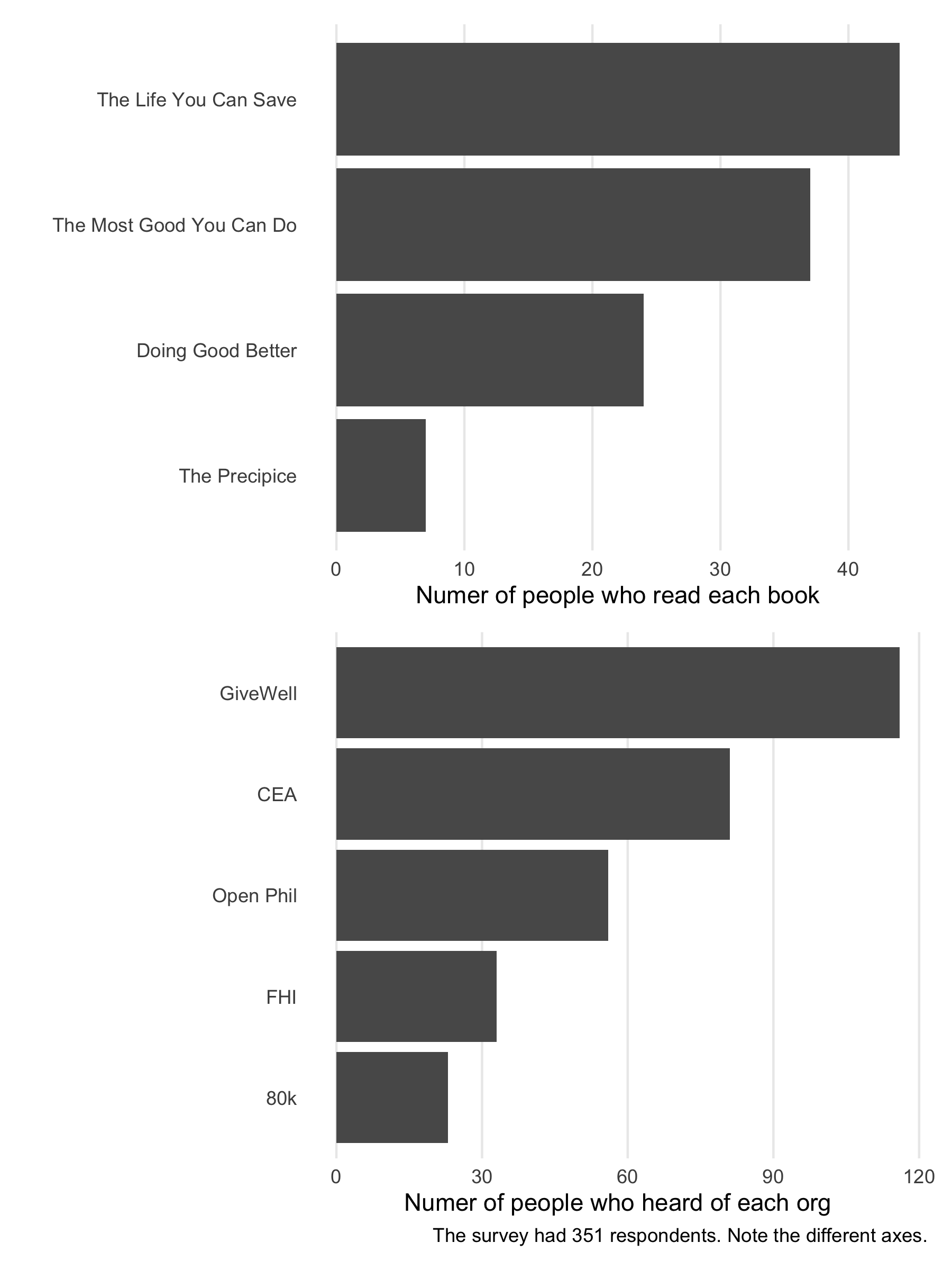
My main takeaway here is just that professors don't know much about EA.
It should thus not be surprising that when I asked which topics a professor would devote at least 30 minutes of class time to in an introduction to international development course, the topics of EA and moral philosophy were the least likely to be covered, by a large margin.
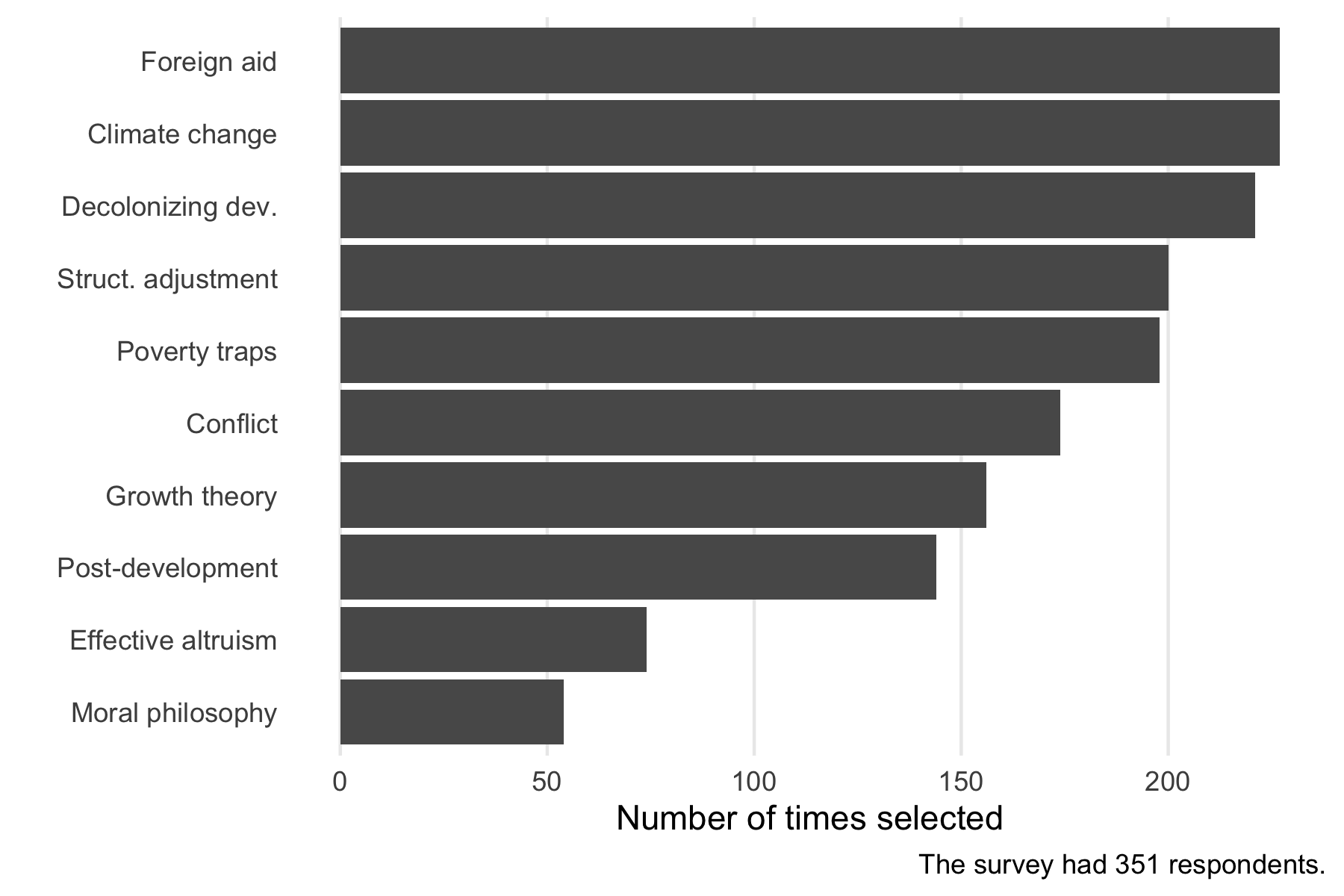
Do IDEV professors already agree with (near-term) EA?
They basically do.
Almost 80% either strongly agree or agree that “From a moral perspective, people should care about the well-being of all human beings on the planet equally; they should not favour the well-being of people who are especially close to them either physically or emotionally” (Impartial beneficence).
The vast majority also agree that “when considering whether or not to devote time or money to a cause, one should think not merely about whether one will do good but also about how much good one will do.” (Magnitudes of good matter)
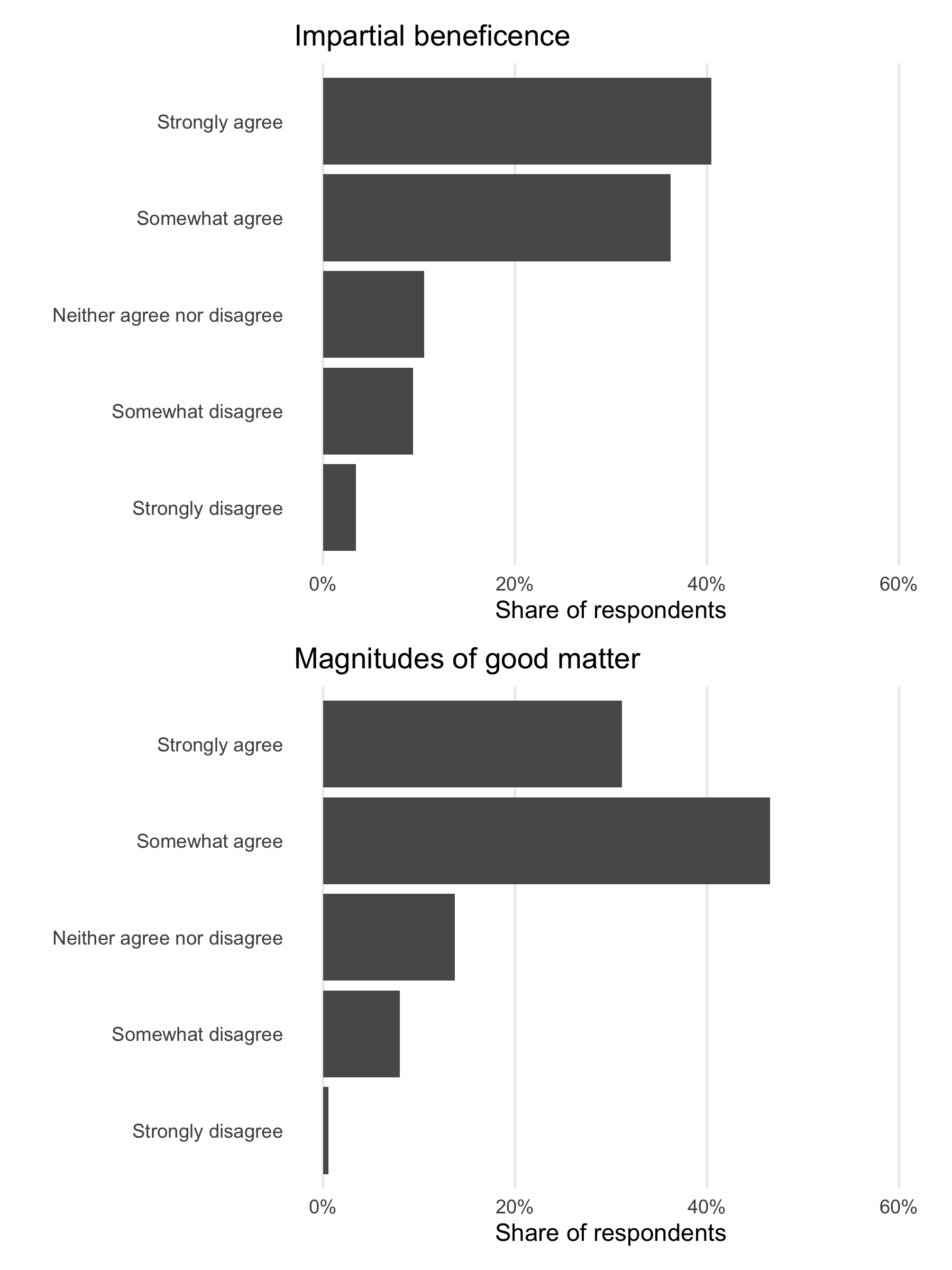
90% of professors gave to charity in the last year and 70% gave to a charity in a low or middle income country, though the most common reasons for giving were personal connections to the cause or specific charity.
Students and teaching
Finally, I asked the profs about students and teaching. The profs think that most students enrol in IDEV courses because they want to help the global poor. They think that students start out much too naive and optimistic about the prospects for global development, but that by the end of their program at least a substantial minority of students are overly pessimistic and jaded.
Conclusion
My main takeaway from all this is that IDEV profs agree with most (near-term) EA principles, but are unaware of EA. Even those that kind of have heard of EA don't actually know that much about it. These same professors often think that students start their programs of study (too) optimistic about development but that many graduate too pessimistic. I think a useful antidote to this pessimistic trend is... EA!
Personally, I often build EA content into my lectures because I find it useful. I like motivating my statistical methods courses (for IDEV students) with real development RCT examples. I like to draw on GiveWell's top charities when teaching concepts around cost-effectiveness.
I'll be hopefully running a similar survey on students in the Fall and I'm working on academic articles based on these results. If anyone wants to know more you can DM me here or on twitter.
If you're an IDEV student, um, maybe mention EA to your profs? They probably don't know what it is and they might find it fascinating.
And if anyone wants a fuller presentation of the results (along with more details and graphs), you can get that here.
- ^
I'm not going to get into technical details about the sample or whatnot in the main post as I think it is distracting. I will eventually publish academic work on this with lots of detail, and anyone can ask me questions about such things in the comments. I emailed about 2500 people and 351 took the survey. I basically tried to email everyone who was associated with a university IDEV program in each country, but figuring this out was a little complicated and we surely missed lots of profs.
- ^
The lowest credible estimate I've seen is 530 USD for seasonal malaria chemoprevention.

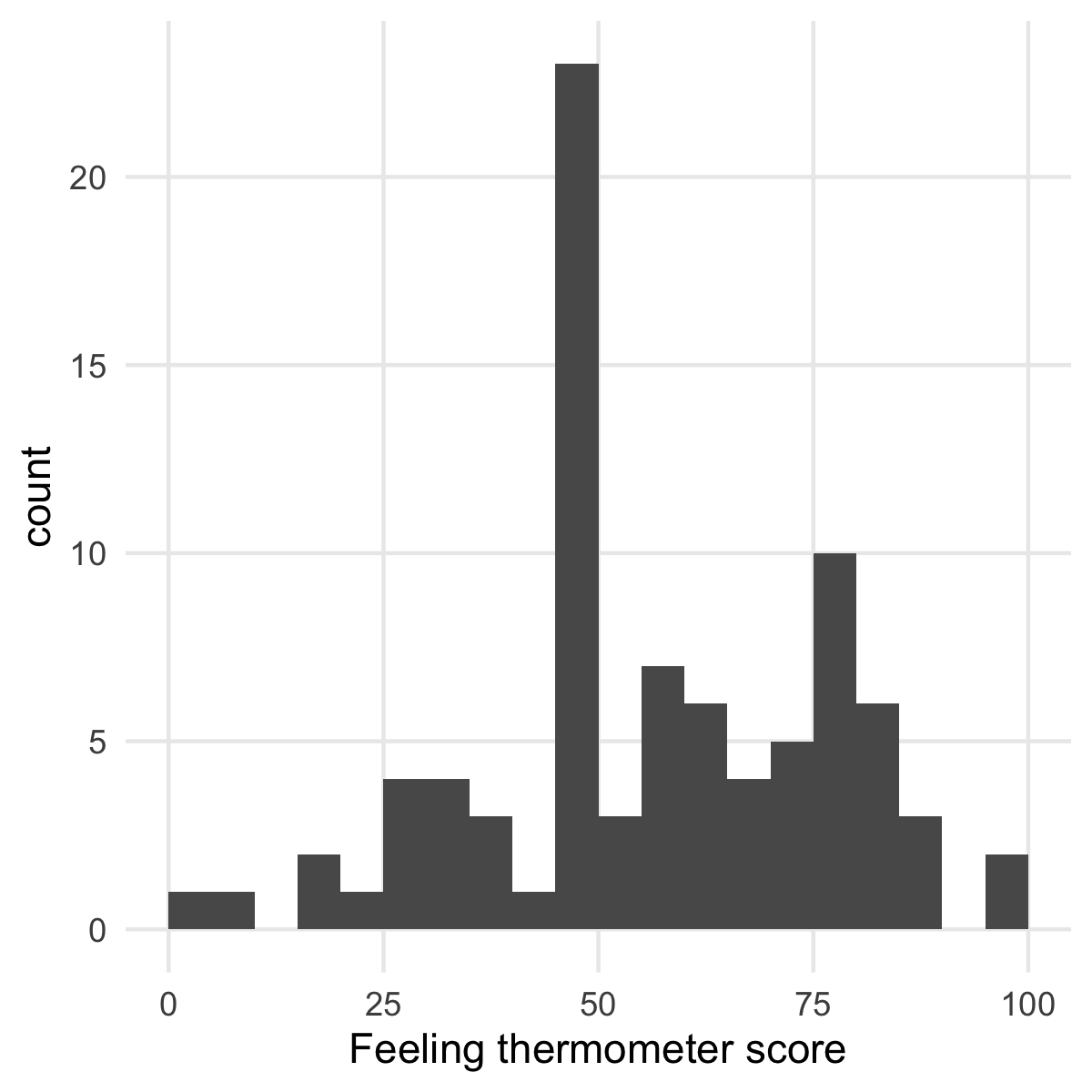
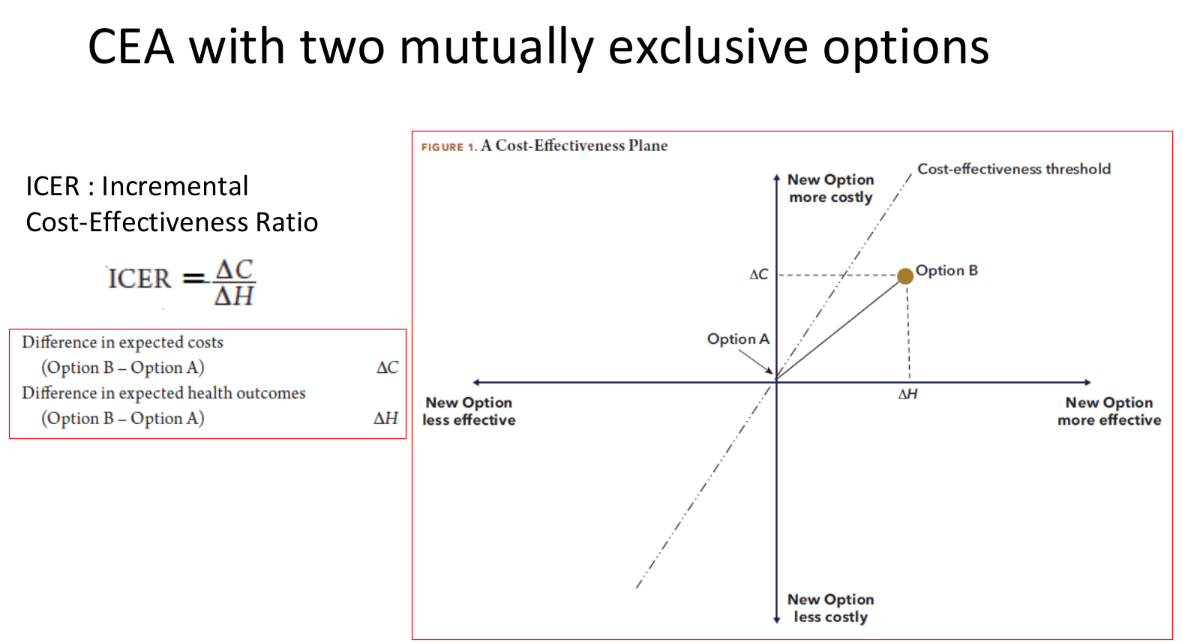



I took a development class in law school and thought the total focus on aid/politics/culture was a feature of it being in a law school. I guess not.